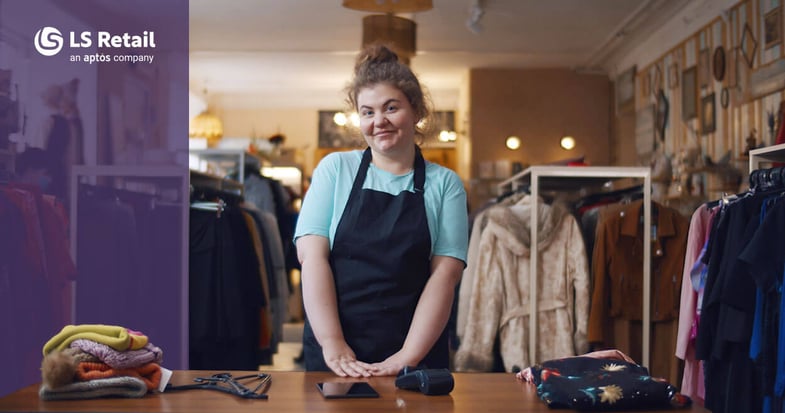
A point of sale (POS) and enterprise resource planning (ERP) software implementation impacts every aspect of a retailer’s business, so making the switch or upgrading to a new version is a big step. For charity retailers, which are accountable to their supporters for their operating costs, that decision can be even more complicated. While on the one hand the growing administration burden they face is one of their biggest cost centers, they must also be able to justify any new investment to handle it better.
But doing nothing is no longer an option. As charity retailers work to stay afloat and tackle challenges around multi-channel stock management, keeping supporters engaged and getting maximum donations from cost-conscious consumers, they cannot afford to hold onto inefficient processes and legacy technologies. The most discerning recognize that their pain points can be relieved with the right POS and ERP software. Leading charities like Ten Thousand Villages, Sue Ryder and the Royal Horticultural Society (RHS) are just a few of the organizations that have made the leap.
Is it time for your charity business to embrace a modern POS and ERP system too? In this blog post, we have identified five questions you should ask as you evaluate the options on the market and ensure your investment pays off.
1. Can it manage all aspects of your charity business?
If your data sits in siloes across separate databases, and your channels don’t communicate with one another, sooner or later you’ll lose track of which areas of your business are performing well and which aren’t. That’s why charity retailers need a unified technology platform that provides a clear view of their data, giving them total control of their operations and real-time information on products, sales, and customers for all online and physical stores.
Today, UK charity RHS runs multiple retail sites on LS Retail technology. The company uses the software to manage its retail and sales business, including supply chain, sales orders, order fulfillment, and financing. With one single platform, RHS has all the capabilities to manage:
- Retail activities across its garden centers
- Finances, excluding charitable finances
- Books and gifts, e-commerce sales and inventory
- Events
- Data, including product, sales, and customers.
2. How strong are the stock management capabilities?
As donated goods stream into your charity shop and collection points, everything needs to be sorted, checked for quality, allocated a product category, priced and distributed to the store where it’s most likely to sell. It’s a time-consuming process that relies on staff and volunteers to get right.
Charity retail chains can reduce this burden with the right POS and ERP system. What you need to look for are powerful inventory capabilities and a clear, real-time view of stock, so you can quickly process new donations, manage purchased items, and keep stock levels balanced. A centralized view of sales allows you to track how products are selling across stores and online, see where there are stock shortages, and move products from one location to another if needed.
3. Does it help you manage your employees and volunteers?
By their very nature, charity retailers have a high staff turnover. Most stores tend to be manned by volunteers of all age ranges, which need to be sourced, hired, trained and managed. Having a modern POS system, then, which is easy to use, requires minimal training and can easily plan employee schedules, is an invaluable asset to your charity business.
For Sue Ryder, a simple and intuitive POS was a key criterion when selecting a new retail system.
“Having a till that is simple, clear, clean, and easy to use, is of great value for us,” said EPOS Systems Manager Larcombe. The volunteers in the Sue Ryder stores, some of whom are seniors who have no previous retail experience, can use the till easily after a short 45-minute training session. “The training mode on the LS Retail till has been extremely useful, our volunteers can practice without doing transactions, and usually grasp it very quickly.”
4. Does it deliver strong business intelligence and advanced analytics?
Do you understand exactly what is happening across your charity store network? If you want to see at a glance which products and locations are driving revenue, and where you should act, then data analytics can help, particularly for pricing and assortment optimization. Although these intelligent capabilities can be added onto your retail management system, it pays off to have them built into the system, rather than as a separate software solution that you’ll have to maintain, pay for, and keep up to date.
5. Will it support changing business needs?
Every retailer needs future-proof technology that will support them as they grow, diversify their offer, and adapt to new business needs. For example, RHS funds its projects using the income from its gardens, shows, and shops, plus the revenue from members’ subscriptions and sponsorships. To maximize donations, charities tend to regularly re-evaluate their offering and need technology that supports new business ventures, whether it’s opening a coffee shop or a new online store.
“One of the reasons to do the whole reimplementation was to allow us a more robust and standard upgrade path, and to remove as much customization as we could,” said Lynn Moore, Senior Project Manager at RHS.
If you already run non-retail services, or plan to do so, it pays off to find an ERP and POS system that can support different industry requirements out of the box.
Are you ready to upgrade your technology?
Technology has come a long way since most charities first implemented their POS and ERP software. Today’s retail systems offer way more than simple transactional capabilities; they sit at the heart of a retailer’s operations, uniting all aspects of the business to deliver seamless consumer shopping experiences and multi-faceted efficiencies that reduce time-intensive tasks and maximize profit.
To find out more how you can make a modern POS and ERP retail system work for your charity business, contact us and request a demo.

